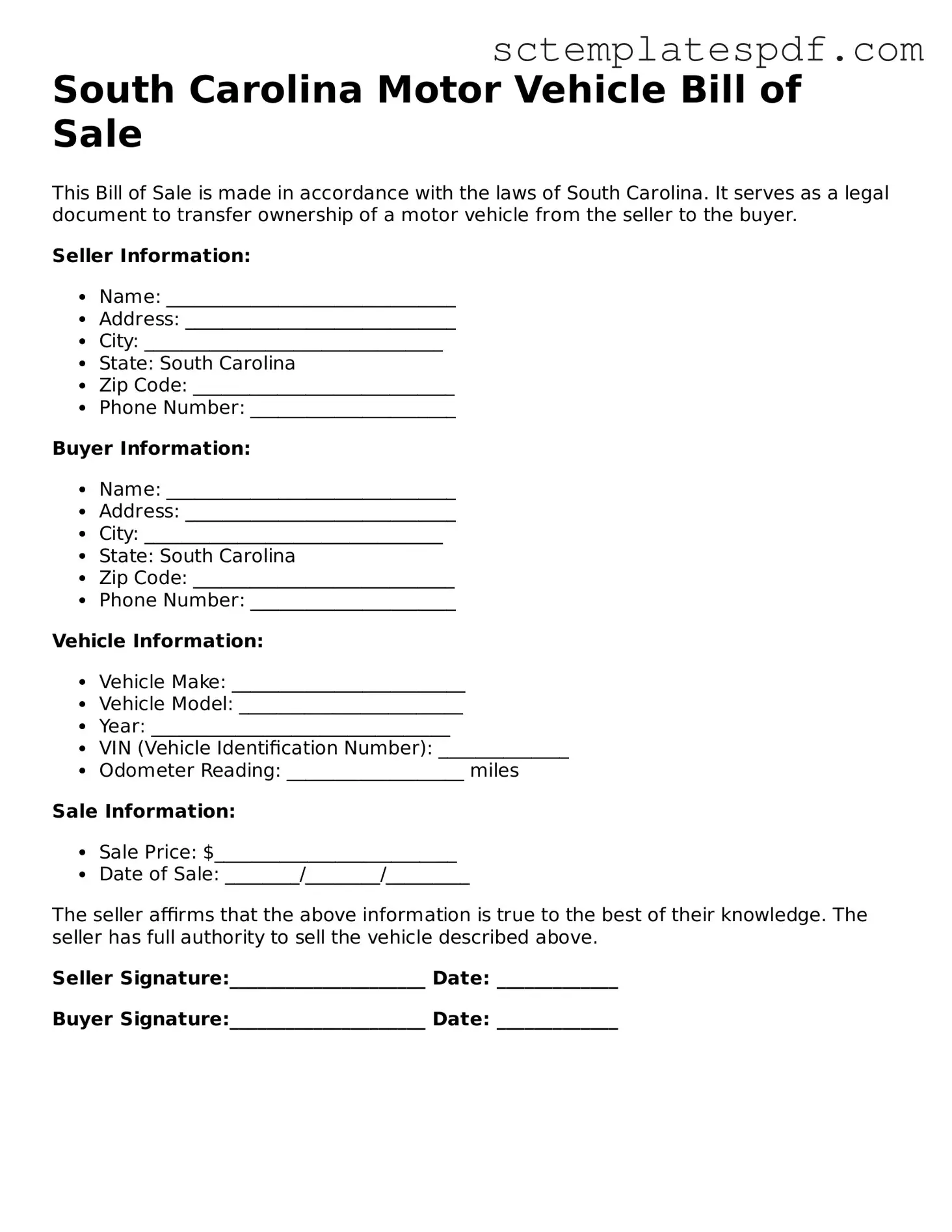Valid South Carolina Motor Vehicle Bill of Sale Document
The South Carolina Motor Vehicle Bill of Sale form is a crucial document that serves as a legal record of the sale and transfer of ownership of a vehicle. This form outlines essential details about the transaction, including the buyer, seller, vehicle description, and sale price. Understanding how to properly fill out this form is vital for both parties involved, ensuring a smooth transfer of ownership.
Ready to complete your vehicle sale? Fill out the form by clicking the button below.
Fill Out Your Motor Vehicle Bill of Sale
